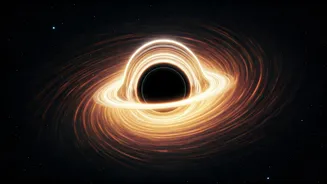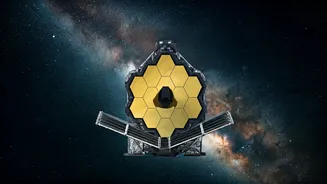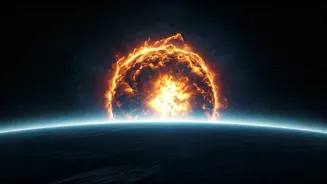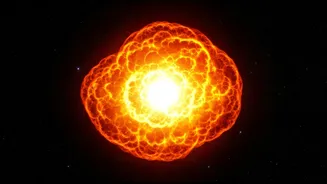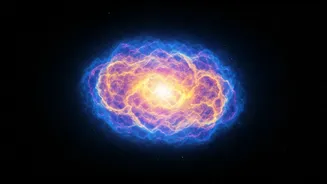Black Hole's Galaxy Impact
The James Webb Space Telescope has provided compelling evidence of a black hole's dramatic impact on a galaxy. This observation shows a black hole plowing
through a galaxy, leaving an enormous scar in its wake. This provides crucial insight into the dynamic interactions between black holes and their galactic environments. Observing these scars allows astronomers to better understand how black holes shape the evolution of galaxies over vast cosmic timescales. The telescope's capabilities enable scientists to witness the aftermath of these energetic events with unprecedented clarity, offering a new perspective on the forces that govern the cosmos. This remarkable discovery underscores the JWST's unique ability to observe the most energetic phenomena in the universe, helping researchers to understand the universe's evolution.
New Cosmic Objects?
The JWST may have discovered a new class of cosmic object: the black hole star. This revelation is adding to the excitement around the telescope's capabilities. The potential discovery of black hole stars is pushing the boundaries of astrophysical understanding. If confirmed, this finding would open up new avenues of research into the formation and behavior of these objects. This telescope can see things in more detail than before. The James Webb Space Telescope's ability to unveil these objects has created a new era of space exploration. It's allowing scientists to probe deeper into the mysteries of the universe. The potential discovery of a new type of celestial object highlights the telescope's potential to significantly advance our knowledge of the cosmos. The research from JWST is constantly unveiling things that we never knew.
Zooming on Black Holes
Scientists have employed a rare 'double zoom' technique using the James Webb Space Telescope to observe a black hole's corona in unprecedented detail. This sophisticated approach involves using different observational tools and methods to obtain a comprehensive view of the environment surrounding the black hole. This technique provides new insights into how black holes feed and interact with their surroundings. The ability to zoom in on these phenomena will allow for more detailed analysis of the energy and particles in the corona. The precise data gathered is a step forward in understanding the complexities of black holes. The 'double zoom' approach provides the most detailed analysis ever of the environment around black holes, unlocking their secrets.
Dark Stars in View?
The James Webb Space Telescope may have spotted 'dark stars' in the far universe. These stars are hypothetical stellar objects powered by dark matter annihilation. This would be a significant breakthrough if confirmed. The JWST's powerful infrared vision allows it to see through cosmic dust and detect faint light sources that were previously inaccessible. The possibility of discovering these dark stars opens a door into understanding the universe's most elusive components. This discovery could revolutionize astrophysics and challenge existing models. If the findings are validated, they would offer valuable clues about the makeup of the universe. JWST's quest is to bring the invisible into the visible spectrum.
